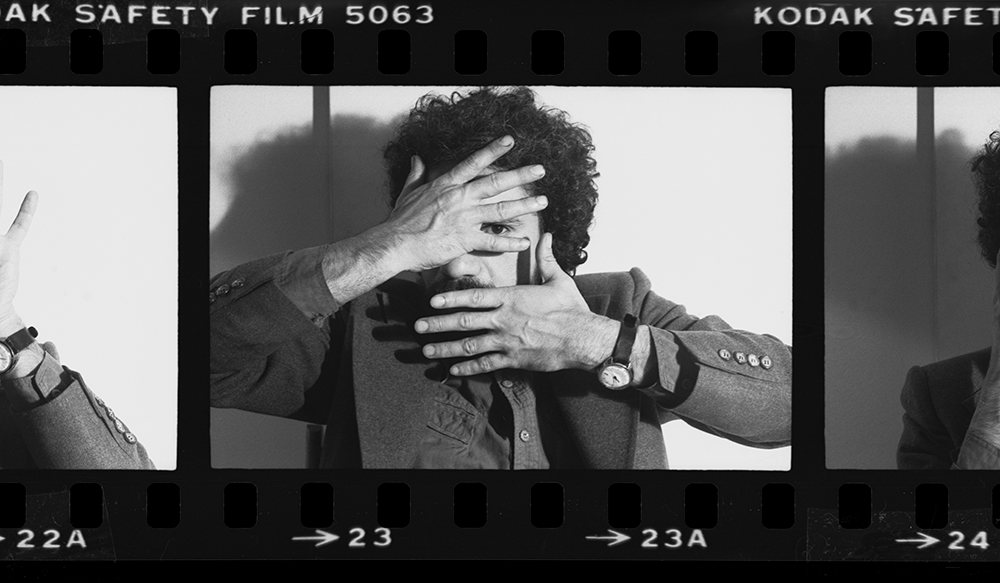 Still from A Revolution on Canvas: (Untitled Nicky Nodjoumi)
Still from A Revolution on Canvas: (Untitled Nicky Nodjoumi)The Tribeca Festival celebrates independent film, creative expression, and champions emerging and established voices. Founded by Robert De Niro, Jane Rosenthal, and Craig Hatkoff in 2001 to spur the economic and cultural revitalization of lower Manhattan following the attacks on the World Trade Center, this years festival featured films about politics and the arts.
Rule of Two Walls describes the artists — visual artists, musicians, street artists, performing artists, filmmakers — who have chosen to remain in Ukraine after the war started. It is slowly revealed that many of the artists we meet are part of the film crew: director, cinematographer, producer, assistant editor, and sound recordist telling their own stories as they travel around the country to Bucha, Irpin, Kharkiv, Lviv and Kyiv to make this documentary. In one scene the artist’s boyfriend sings about not being able to love enough, how he didn’t get to “reap the rye”; in another an artist feels she has to stay in order to record what is happening. Easter eggs are decorated with symbols of war, while crosses are made of tree branches. In the National Art Museum of Ukraine, we see wall labels amidst empty galleries. Posters are fly-papered with the slogans “Our fire is stronger than your bombs,” “We are not afraid of you, Russia,” “We hid our monuments because we don’t want them to see your shame,” “Chernobyl Nuclear Power Plant/24.02 captures by the Russians. Flip the Hour-Glass.” The film’s title refers to sheltering in corridors between two walls.
Iranian artist Shirin Neshat’s The Fury depicts the Islamic Republic’s brutal treatment of political prisons. Here a woman in a nude bodysuit is forced to dance before a group of 14 male guards who leer, smoke, and, it is implied, rape. It was shown at the Immersive section of the festival — virtual, augmented, mixed reality, and participatory experiences — in both a two-channel video and 360 degree installation which plunges you into the center with guards surrounding you. A stylized and fictional reading, the woman runs out into the street at the end of her dance where she is followed, screamed at, objects are thrown, and car windows smashed. Back inside, you as the viewer are left encircled by the guards who stare right at you, a chilling sensation.
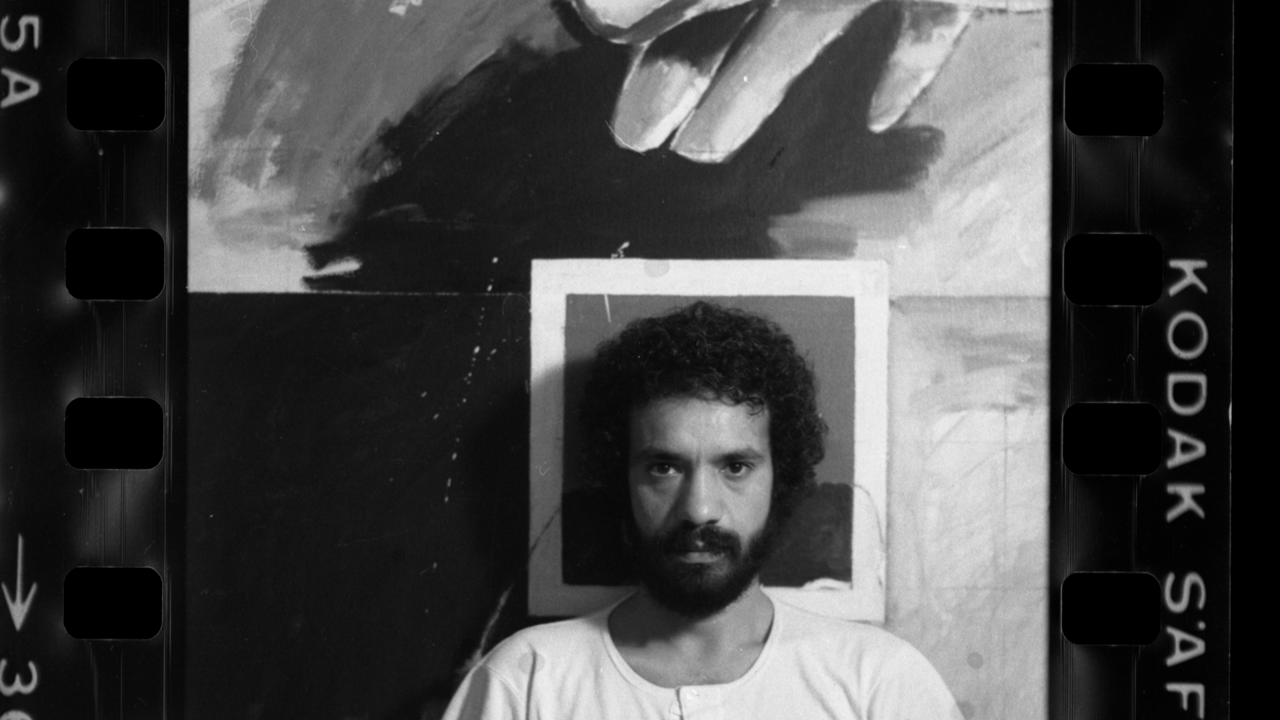 Still from A Revolution on Canvas: (Untitled Nicky Nodjoumi)
Still from A Revolution on Canvas: (Untitled Nicky Nodjoumi)Also circling around the Islamic Revolution in Iran is A Revolution on Canvas: (Untitled Nicky Nodjoumi), about artist Nickzad Nodjoumi whose simultaneous exhibition “Report on the Revolution” at the Tehran Museum of Contemporary Art depicted the recent 1979 revolution itself which he supported, but not the right-wing religious government that took power. Instead of the work being embraced since it enshrined the revolution, the enraged hardliners attacked the work and forced the show’s shutdown. Nodjoumi fled the country with his wife, printmaker Nahid Hagigat, who had a scholarship to NYU, with the intention of going back to continue the fight. Untimately, that never happened. Their daughter, who with her husband made this film, and Nodjoumi try to locate the artwork from the exhibition which they believe is stored in the basement of the museum along with the collection of the last Shah’s wife, including works by Warhol (portraying her), Jackson Pollock, the Impressionists, and much more. The film is an exploration of art, politics, legacy, immigration, identity, and the crossfire between politics and life.
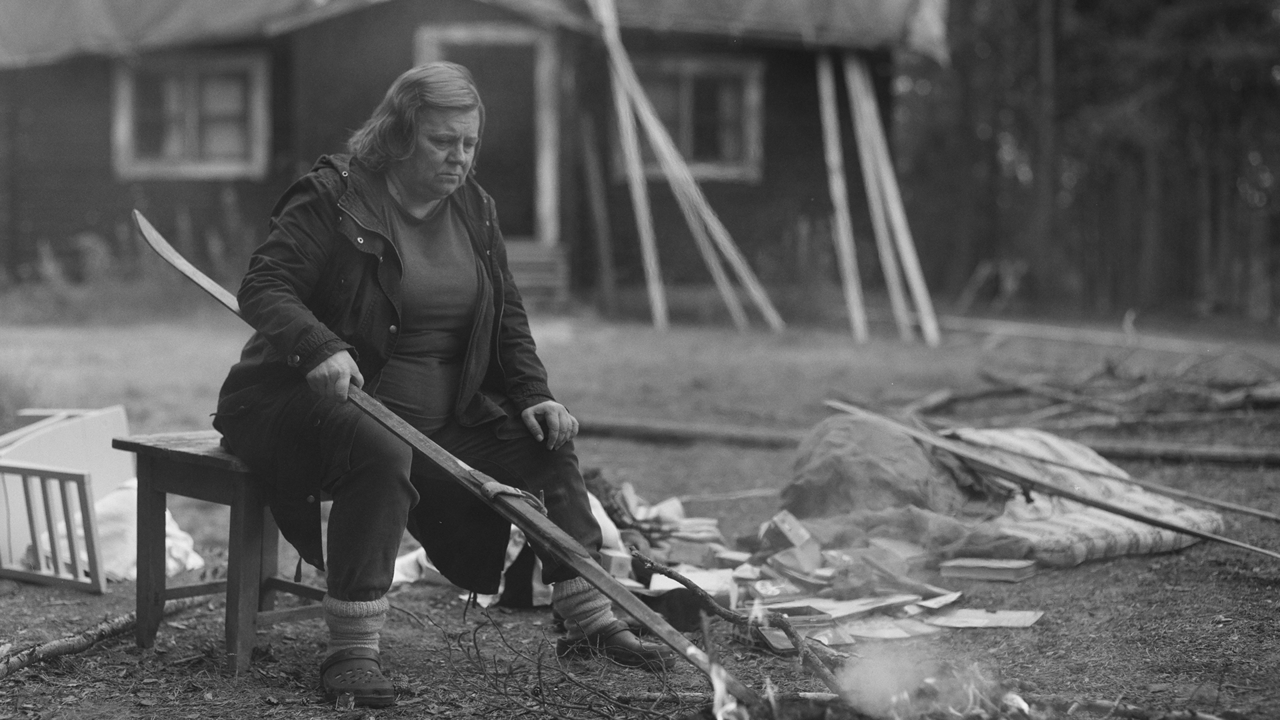 Still from Je’vida
Still from Je’vidaJe’vida is the Sami name for Lida, a hardened Skolt Sámi woman who reluctantly travels back to her lakeside childhood home in Finland with her niece after the death of her estranged, assimilated sister. Their purpose is to clear the house with the intention of selling it, but she is haunted by her oppressive past, including a boarding school that tried to beat out her native identity and that caused her to bury her heritage, until now. The surroundings evoke bittersweet memories and she reconsiders the expulsion.
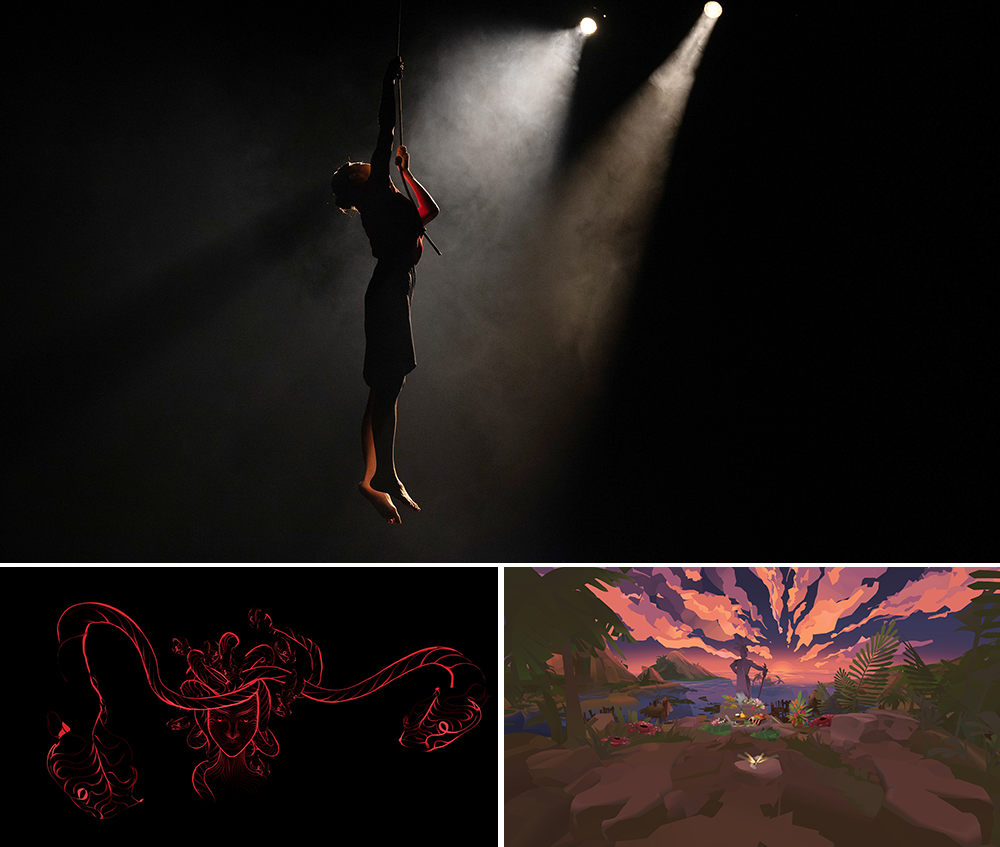 Top: Still from Over the Rainbow. Bottom left: Still from Maya: The Birth. Bottom right: Still from Reimagined Vol. II: Mahal.
Top: Still from Over the Rainbow. Bottom left: Still from Maya: The Birth. Bottom right: Still from Reimagined Vol. II: Mahal.A group of immersive projects depicted stylized spaces in Asian cultures. Maya: The Birth (Chapter 1) is “South Asian Futurism” about “an ordinary 21st century girl, as she transforms into a uniquely female superhero whose powers derive from the process of menstruation” against the backdrop of “the restrictive traditions of her conservative family, and a world of hidden shame, stigma and taboo.” We move through various spaces — a stylized roadway in London, the corridor of a school, a room where the objects such as desk, bedding, chairs and lamps fly all around after an altercation with her Asian mother. You are surrounding by these environments while Maya morphs around you, often in stylized red, curvy linear images. Over the Rainbow is about longing. It begins in a room with artwork hung on the walls, then Asian women dance in a circle around you. Reimagined Vol. II: Mahal is a Filipino myth of the creator god, Bathala, who has just died, and his four immortal children, using traditional imagery and using Quill, an interactive program to develop literacy skills.
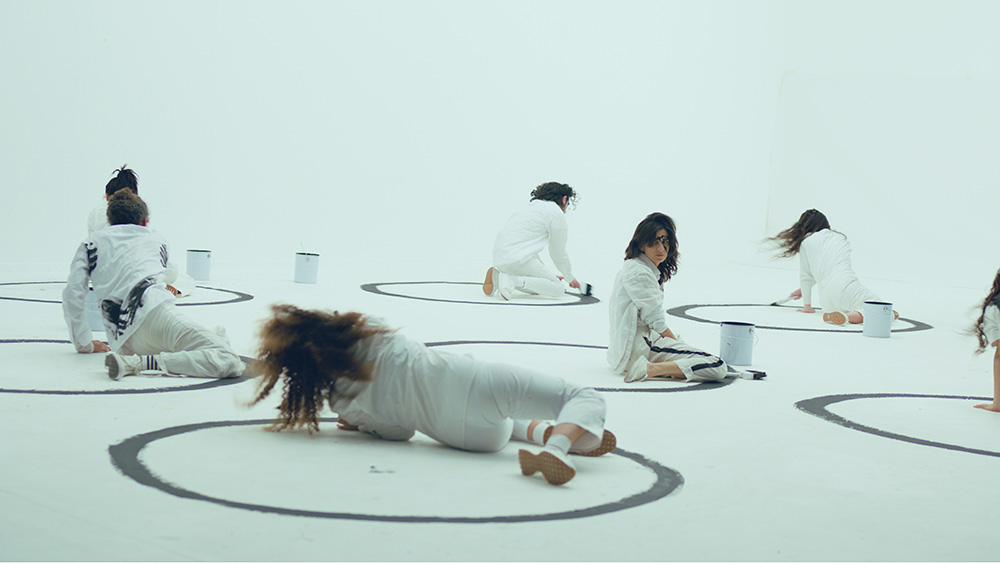 Still from To the Desert
Still from To the DesertTo the Desert is an Israeli music video about following your own path, playing with the color black punctuated by white and vice versa. We follow a black line into painted outlines of a cityscape. Everything is white and people paint black accents and stripes on the edge of garments, a hat band, eyebrows. Our heroine dives in a black liquid pool and everything reverses into white. It ends with her holding a bucket of red paint about to pour, smiling.
Films Mentioned
Rule of Two Walls, Director David Gutnik
The Fury, Director Shirin Neshat
A Revolution on Canvas: (Untitled Nicky Nodjoumi), Director Sara Nodjoumi
Je’vida, Director Katja Gauriloff
Maya: The Birth (Chapter 1), Directors Poulomi Basu and C.J. Clarke
Over the Rainbow, Director Craig Quintero
Reimagined Vol. II: Mahal, Director Michaela Ternasky-Holland
To the Desert, Director Asaf Yecheske
